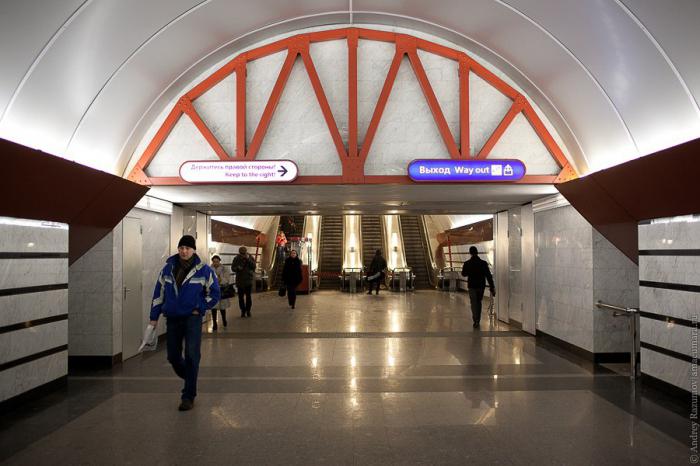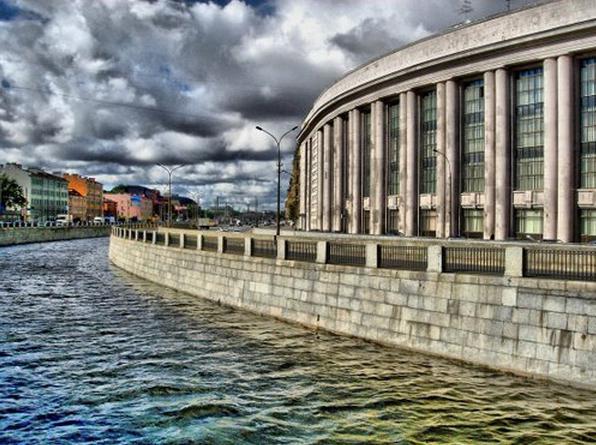From a large number of channels and channels of the Neva, along and across the historical part of St. Petersburg, the Obvodny Canal stands out sharply, both in its length and in its original appearance. There are reasons for this. Let's try to take a closer look at the longest channel in the city. By the way, in historical sources there are both versions of its name - “Obvodny” and “Obvodnaya”.
How St. Petersburg was built
One often hears the question of why it was necessary to lay the Obvodny Canal in the city. But its existence is due to several reasons. The northern capital of the Russian Empire was founded by Peter the Great in a very difficult place. In order for this subject to correspond to the status of a large European city, during its construction it was necessary to solve the most difficult engineering problems associated with the preparation of the territory for development and drainage of swamps. In addition, the capital was periodically subjected to powerful floods from the surge wave from the Gulf of Finland. In accordance with the level of technical ideas of the eighteenth century, these problems should have been resolved bypass.
Flood protection project
Eighteenth-century engineers suggested that having a large canal in the peripheral part of the city could lower the water level in the Neva in its central part during floods. In addition, the Obvodny Canal was supposed to play the role of a fortification that protects the capital from enemy attacks from the south. Despite the fact that the flood protection function has not been confirmed in practice, the city has acquired a reliable border on the southern border. It was convenient to put police and customs outposts on it. In addition, the channel played the role of a barrier factor in preventing the spread of infections and epidemics.
Bypass channel, Petersburg. Construction history
The first large site was laid in the second half of the eighteenth century. It was built from 1769 to 1780 and connected the Ekaterinofka River with the Ligovsky Canal. It was mainly a fortification fortified by an earthen rampart from the side of the city. The construction of the eastern section of the canal resumed almost forty years later. It was completed by 1833. The channel was of sufficient depth and width to provide end-to-end shipping links throughout the southern contour of the city. This was further significant for the development of industry and trade on the outskirts of the capital. The bypass channel, among other things, provided the ability to quickly deliver raw materials, goods and materials to developing enterprises. Construction was associated with the need to erect capital bridges at the intersection of the canal with roads leading to the south from St. Petersburg.
The architectural appearance of the area
The total length of the shipping route along the southern outskirts of St. Petersburg was just over eight kilometers. The Obvodny Canal embankment began to be populated quickly even before its construction was completed. Along both its shores, residential buildings, handicraft workshops, factories and trading enterprises began to be erected rapidly. The architectural appearance of the outskirts was significantly different from the aristocratic center of the capital of the Russian Empire. There were no palaces or luxurious mansions on the promenade of the Obvodny Canal. The decisive architectural factor here was the functionality, buildings and structures were to bring income. And their appearance was of secondary importance. Mostly the urban poor and middle class settled here. Nevertheless, the architecture of the Obvodny Canal embankment has a peculiar expressiveness and color of a worker, and often a criminal suburb.
The bypass channel
It is difficult to say how stable the negative aura of this Petersburg outskirts is due to objective circumstances. But information on the Obvodny Canal has been steadily featured in many periodicals of the city in the section "Criminal Chronicle" since the middle of the nineteenth century. This is reflected in some works of art. Both in ancient detective stories and in modern television series, the action often takes place precisely in the blocks located on the embankment of the Obvodny Canal. Many legends, mystically colored riddles and incidents are associated with these places. But many believe that the criminality and mystery of the area are greatly exaggerated.
Transport infrastructure
In the second half of the nineteenth century, two large railway junctions, Warsaw and Baltic, were built on the outside of the Obvodny Canal. The architecture and decoration of these buildings stand out from the general development of the embankment area. According to the architects, the stations in the Russian Empire were supposed to reflect the growing power of the state. Funding for their design and erection was not accepted. Stations on the embankment of the Obvodny Canal were successfully tied to the general infrastructure of urban transport. And at present only the Baltic is active. Passenger traffic in the south-west direction is carried out from it.
Metro
Any district of a modern metropolis cannot be fully integrated into the life of the city without reference to the metro scheme. There are three metro stations in the immediate vicinity of the Obvodny Canal embankment. The "Baltic" Kirov-Vyborg line was opened in 1955, located at the station of the same name. Frunzenskaya Moscow-Petrograd is located near the building of the former Warsaw Station. It has been operating since 1961. An event of fundamental importance for residents of the embankment was the opening in December 2010 of the Obvodnoy Canal metro station on the Frunze-Primorsky line of the St. Petersburg metro. In the future, she will be destined to become a transfer. From it, a transition to the Obvodny Canal-2 station of the Krasnoselsko-Kalinin line will be carried out. The ground lobby is located on the liveliest spot of the embankment - at the intersection of it with Ligovsky Prospekt. The design and architectural design of the metro station are fully consistent with the historical appearance of the district.

Bypass channel, St. Petersburg. Bus station after reconstruction
Traditionally, in the peripheral part of large cities, it is customary to place freight and passenger terminals for communication with nearby regions. But the bus station on the embankment of the Obvodny Canal was opened in 1963, when the border of the city naturally managed to move far to the south. But for passengers arriving in Leningrad, it was quite convenient. From the bus station on the Obvodny Canal, not only suburban, but also intercity passenger transportation was carried out. Before the centenary of St. Petersburg, the bus station underwent reconstruction and was brought into line with modern ideas about what a passenger terminal in a metropolis should be like. Today it is used both for communication with cities and towns of the Leningrad Region, and for more distant passenger traffic, up to and including the Stavropol Territory. From the bus station and international flights to Finland, Estonia, Latvia and Belarus.
Bypass channel today
Long gone are the days when the Obvodny Canal served as the southern border of the city. Today it is closer to the center than to the outskirts. Over the past years and decades, the appearance of the entire region has changed greatly. Now it is not much like a working suburb and looks quite respectable. Many new modern residential complexes have been built, a major reconstruction of old houses has been carried out. From some historically and architecturally significant buildings, only facades familiar to all have survived. The area is full of active business and commercial life, there are many commercial structures and entertainment facilities. According to experts in the field of secondary turnover of residential and commercial real estate, the area of the Obvodny Canal embankment is rather highly quoted in real estate agencies. This means that many indigenous Petersburgers are ready to settle in this once considered low prestigious area. Its attractiveness increased even more after the commissioning of the aforementioned metro station in 2005.

Future bypass
Currently, the very existence of the Obvodny Canal in its current form is under active discussion. To many, it seems rational to fill up the canal and build a modern highway in its place, providing through traffic from the eastern part of St. Petersburg to the western one. Such a solution would allow to radically unload the central historical part of the Northern capital from traffic flows. But ecologists and citizens categorically oppose this idea, who are not indifferent to the historical and architectural heritage of their city. They remind that the Obvodny Canal is the most important part of a single hydrological scheme, and its elimination will have disastrous consequences for the entire drainage system that ensures the vital activity of the big city. In addition, several rivers and streams flow into it, and you just won’t be able to fall asleep. But at present, no concrete decisions on the future fate of the longest channel in St. Petersburg have yet been made. Among other things, the Obvodny Canal has the status of a historical heritage. And local authorities do not have the right to arbitrarily make decisions on its liquidation.